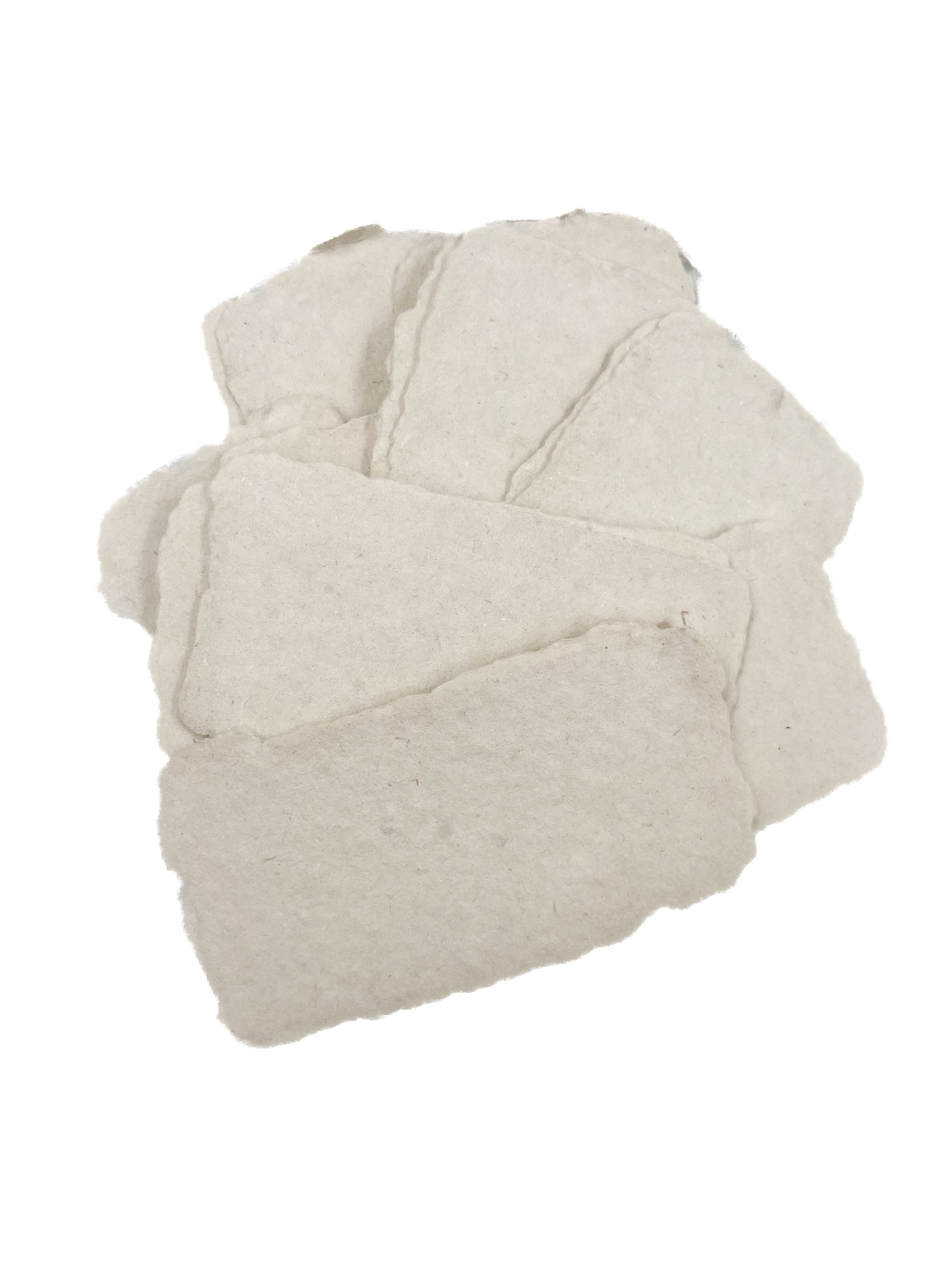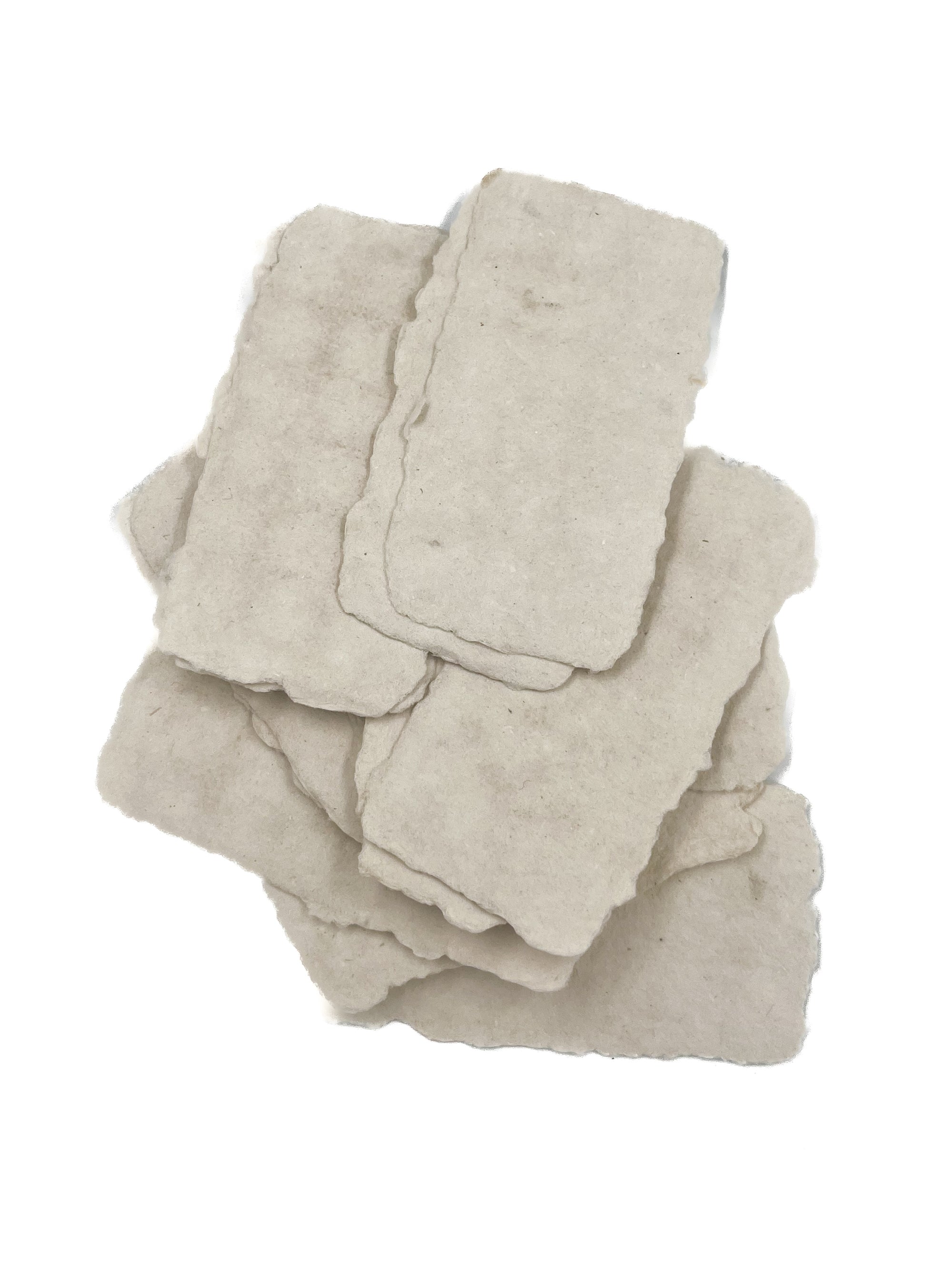
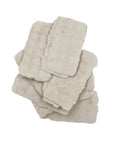
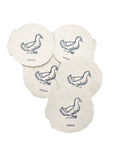
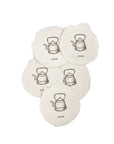


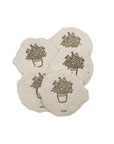
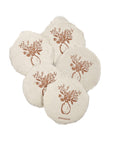
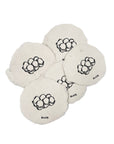
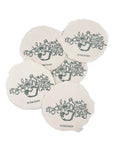
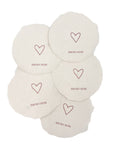
Vanilla 2x4 Handmade Paper with Custom Letterpress
Plant-dyed
Handmade in California
Custom Letterpress just for you!
Similar to Pantone 7527U, a pretty, neutral off-white with greige undertones plant-dyed and made by hand in our California studio - ready to be printed with your custom designs on our antique presses!
This print and paper service is designed for those familiar enough with Adobe Illustrator to correctly format their design files for print. You can find my video here with tips and instructions for doing so! https://www.youtube.com/watch?v=PPWeBjtusQY
A few letterpress design essentials:
1 - Your design must be one color. There are *very* few exceptions that would allow us to add a second color - please email custom@farmette.co if you would like to know more ;)
2 - All artwork must be vectorized and text converted to outlines
3 - The document must be in CMYK mode with all artwork set to 0C0M0Y100K
4 - All dots must be at least 1pt diameter, and all lines must be at least .35pt thick
5 - Because it works like a rubber stamp, the best designs for letterpress feature mostly text and line work and limit solid blocks of printed area.
*File format help is available if you would like it at the rate of $50/hr. Please email custom@farmette.co for details.
Letterpress ink is translucent, so ink colors will show differently depending on the paper color. When available, we've included photos of prints in our stocked ink colors on this paper color for reference.
Please consider the ink's translucency if choosing a custom ink color, and feel free to reach out to custom@farmette.co if you'd like our input on how your ink color might turn out on colored paper.
If you are looking for opaque metallic prints, they require the use of a differet print technique: foil. Foil is more complex to print and requires more costly materials to set-up, so the price is higher than letterpress. Please email for details.
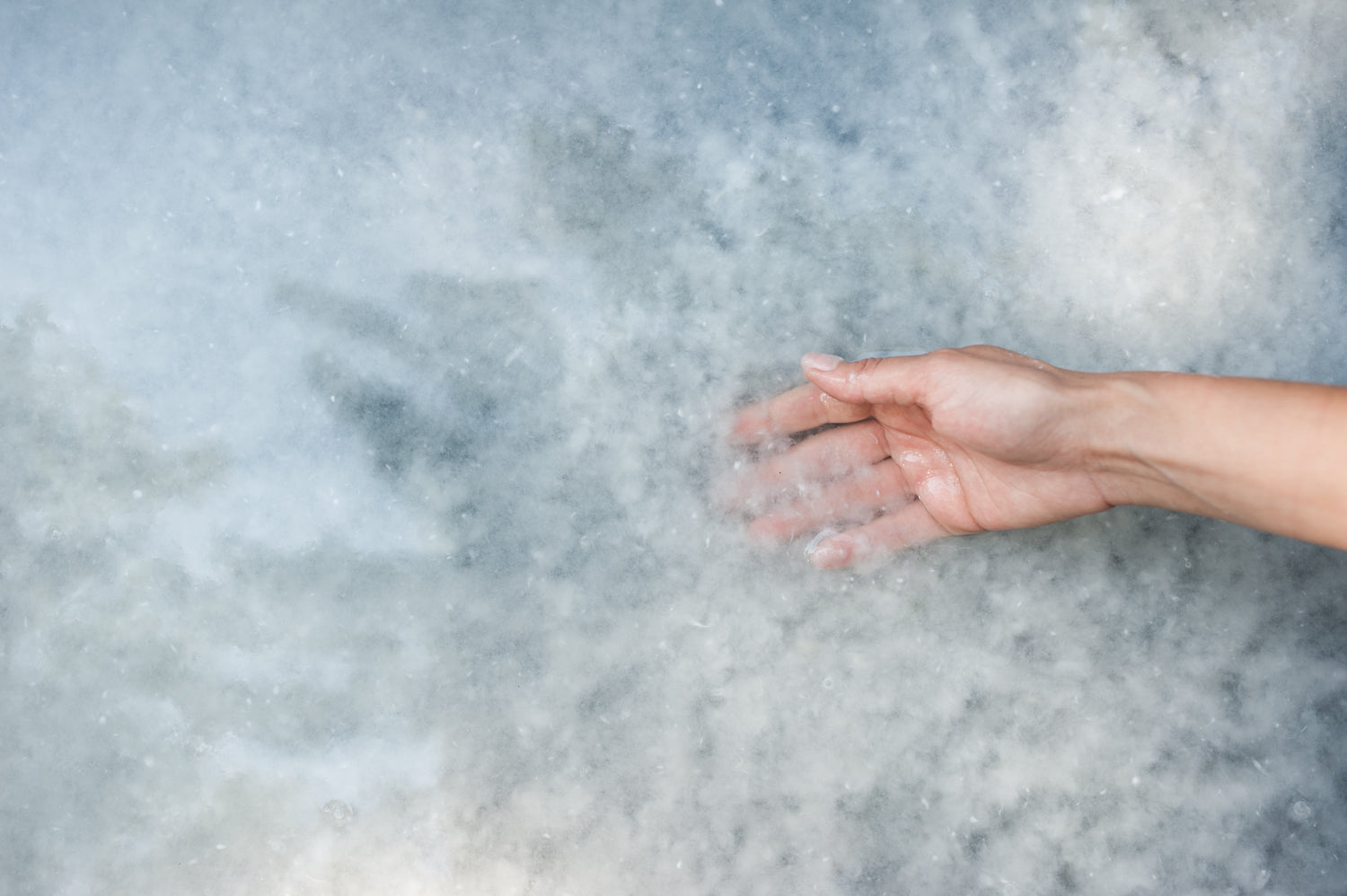
Hand Crafted with love
Farmette paper starts with natural cotton fibers, which are upcycled from the garment industry, and abaca fibers, from a plant in the banana family.
These materials are weighed and soaked, and then processed for four to five hours into pulp with a simple machine called a Hollander beater, which macerates the fibers so that they will knit together when shaken in water.
Once the beater is emptied, we use plant powders and occasionally minerals in careful ratios to dye our pulp in our natural palette. Most dyes are left for a 12-hour period to set.
Sustainably created
Next, the pulp is added to a vat of water. The papermaker skillfully pulls a screen stretched over a frame, with another frame on top - called a mould and deckle - through the pulpy water and shakes the slurry as the water drains out through the screen, leaving the shapes of the paper behind.
Excess water is sponged out, and the wet sheets of paper are transferred onto fabrics sandwiched between acrylic sheets. Stacks of these sandwiches are then moved onto a hydraulic press, where remaining water is slowly squeezed out and the fibers are further knit together to create a strong paper surface.
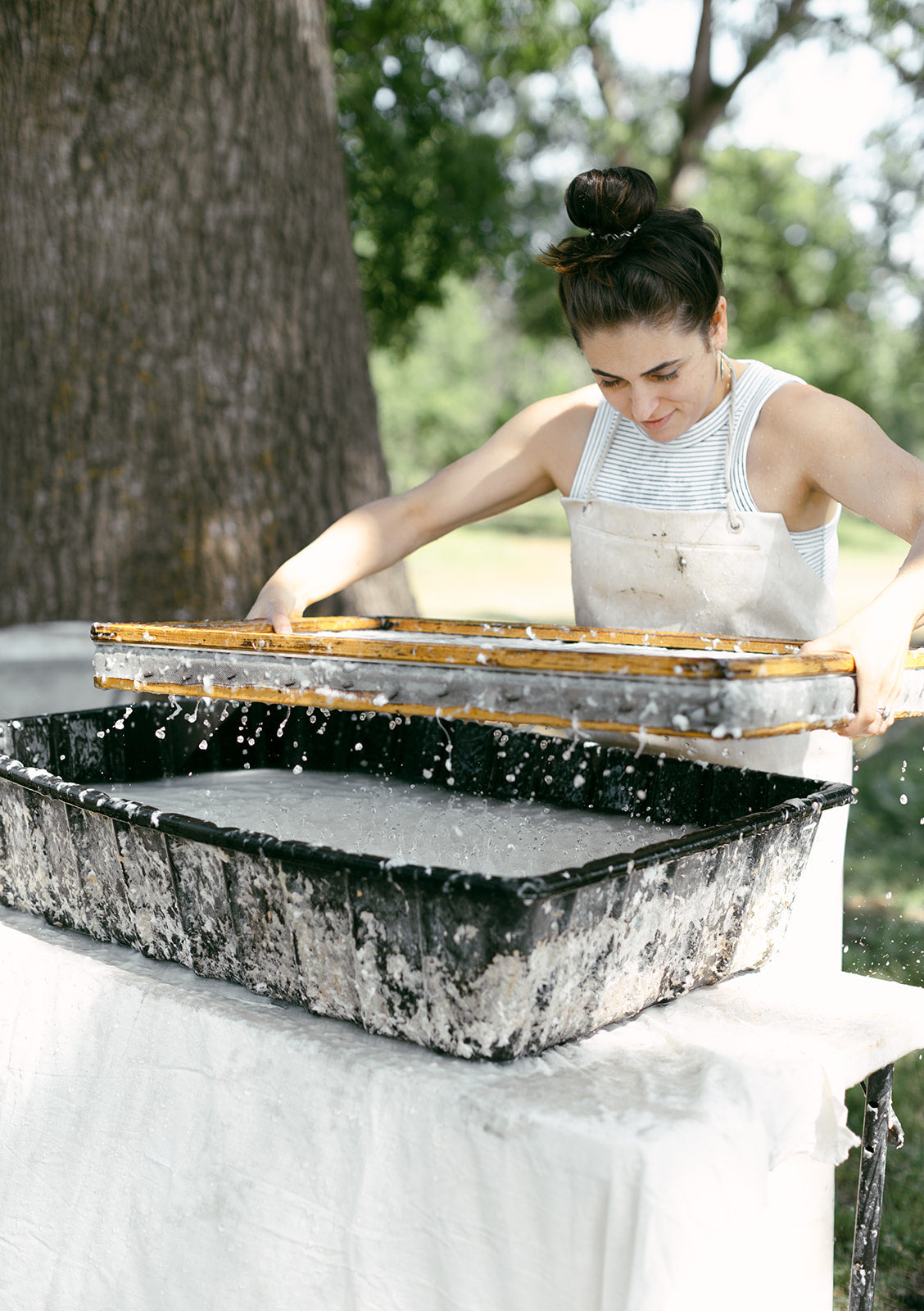
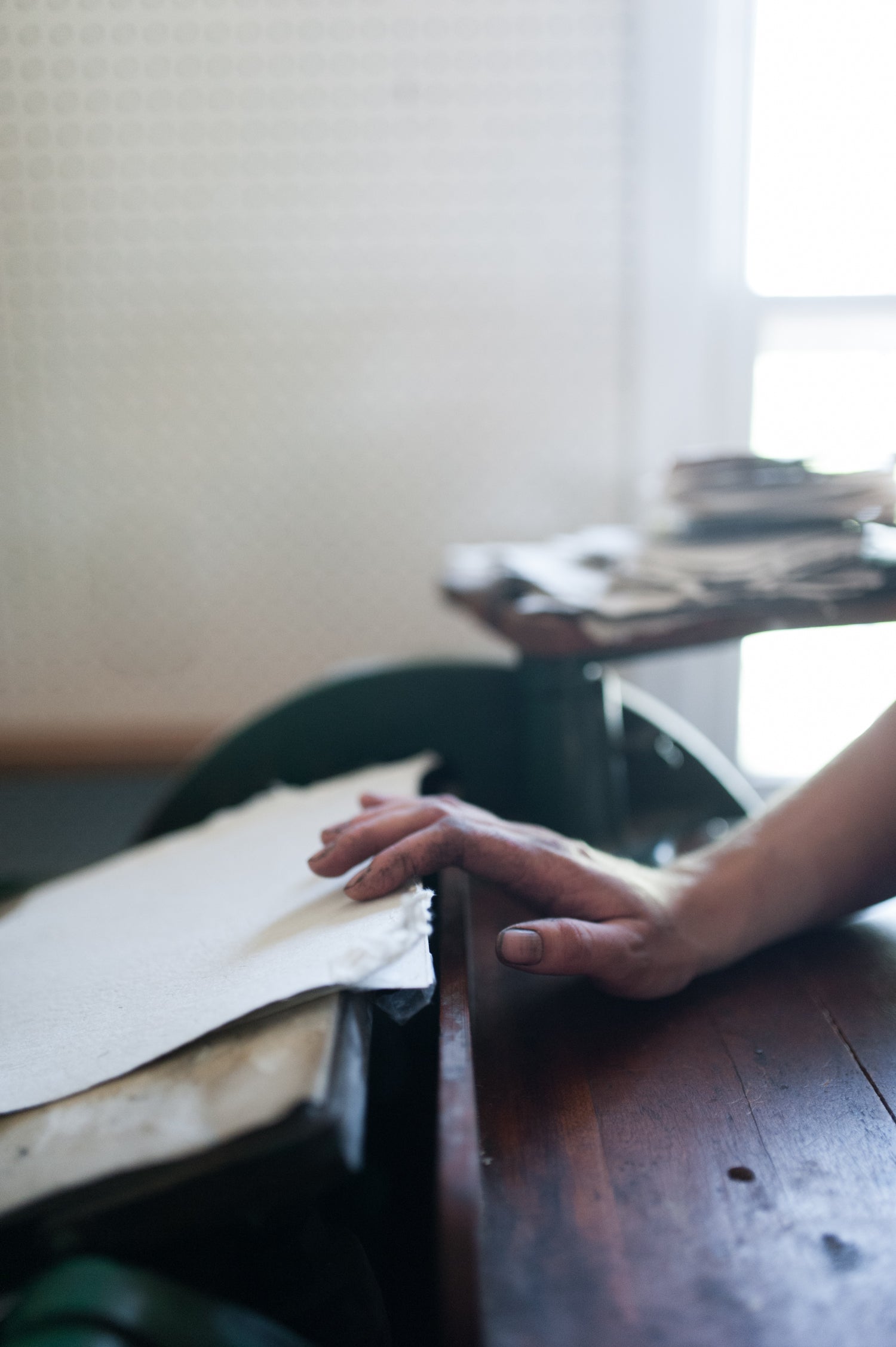
We Use Antique Letterpresses
These fabric-paper sandwiches are then removed from the press and hung to dry. Once they are dry, paper sheets are peeled off the fabrics by hand, and folded by hand into cards if necessary.
At this point, the paper is moved to our print room, where our press people print our designs on antique lettepresses and hot foil presses.

